This is a story of extraordinary transformation.
For three decades Peter Bramhall enjoyed a reputation as one of the leading artisans in the country. He was a master glass blower whose colorful and brilliantly swirling forms of vases, bowls, and platters were widely exhibited and sold in galleries and craft fairs from coast to coast. His studios, located on his vast acreage in the forests of central Vermont were beehives of activity.
Nearby and still standing is the cabin in which he was born in 1942. But around 1990 a rebirth became manifest that had been brewing for years. Bramhall had finally become comfortable with being open about his transgendered self. Concomitant to the process of male fully presenting as female was Peter the artisan becoming Paedra the artist. Her creative drive would now focus on exploring how to most effectively express female sexuality in art — an omnipresent if subtle sexuality that would become a powerful driver of her sculpture. While that emergence started slowly the artistic changes became ever more rapid, resulting in uniquely expressive combinations in glass combined with other mediums. Her newfound freedom and confidence also allowed her to spiritually connect with the female soul — a soul to which she would intimately connect — exploring the themes of mensus, vaginal sex, and abortion despite her remaining physically male.
As an explorer of the depths of her feminine roots it is clear that Paedra’s entire oeuvre is born of a creative process profoundly rooted in angst, love, and yearning. The first art historian to become attuned to the feelings evoked by this sculpture was Maureen Ahern, Director of the Thorne-Sagendorph Art Gallery at Keene State College in New Hampshire. In 2002, in her capacity as curator of an invitational exhibition of sculpture at the Hood Museum of Art at Dartmouth College, she selected Bramhall’s Altar/Infertile. She had first seen this large sculpture as part of an installation of ninety-eight pieces of blown glass, fabric, wood, metal, plastic, sound, and mirrors in a 10-foot square room called Altar to the Feminine Divine. Ahern had thought she had discovered a sculptor new on the scene who “evoked the physical and emotional nature of the feminine. This sculpture was not about glass or craft. Whoever had created it had combined the crystalline, fragile quality of glass with the durability of its other elements to produce a work that clearly resonated with the essence of feminine biology. The sculpture was powerful and used materials in ways I had not seen before.”
Ahern had been well aware of Peter Bramhall the master of glass but had no idea that the artisan had become the artist known as Paedra. “I set out to track down the artist and, to my surprise, found out that it was Peter Bramhall. Altar/Infertile somewhat typi?ed his work at the time the selections were made. The altar’s rectilinear white form suggests virginity and is the resting place for the darkly vascular glass forms. As the viewer confronts the work, the scale and beauty of each glass shape make it resonate on its own…Bramhall’s bold yet delicate construction explores the biological implications of the feminine side of the human condition with a directness I had not seen before.”
Among Bramhall’s nearly 3,000 journal pages one would discover that his father as a young man had played the piano to accompany the silent films being shown in Camden, Maine. He was also an accomplished musician who would unfortunately drive his precocious son away from the piano. He was a painter, too, but seemed unable to focus on any career. After Peter Bramhall’s parents divorced his mother raised the boy in New Hampshire. It was at the Tilton School where he discovered the camera as his first art tool and frequently used the school's photographic darkroom. In 1962, at Valparaiso University he took his first art course. That summer his mother bought him an oxy-acetylene welding torch. No sooner had he begun cutting and welding steel sculpture than he began exhibiting at outdoor art fairs.
In the summer of 1964 his direction in the fine arts became assured when he attended the Aspen School of Contemporary Art and became friendly with James Tanner, a graduate student at the University of Wisconsin, Madison. Tanner was studying under Harvey Littleton [b.1922], often referred too as “the father of the Studio Glass Movement.” Just a year earlier Littleton had established a graduate course and glass studio at the University of Wisconsin. As a pioneer in pushing the glass medium into freely arching undulating forms, Littleton subsequently attracted as students Dale Chihuly and other now-prominent glass artists. When Bramhall visited Tanner at the university’s glass studio his friend handed him a glass blowpipe and “for the first time and I got bit by it,” he recalled.
In 1965 Bramhall began a five-year program at the Cleveland Institute of Art. John Clague [1928-2004], an abstract sculptor in bronze, was head of the sculpture department and Bramhall “basically lived there from day one.” Bramhall worked in wood, clay, and steel, and cast pieces in bronze and aluminum. However, the most influential of his teachers was John Paul Miller [1918-2012] who had expertise in every medium, and was known for having innovated techniques in granulation and enamel for jewelry. Through the intensity of Miller’s lectures on color and space “He gave me my eyes and my sense of spatial relationships even more than the sculpture class,” says Bramhall. Another influential teacher was Julian Stanczak [b.1928], that seminal force in the Op Art movement. Stanczak made him acutely aware of the importance of the meaning and role of every mark.
Bramhall pursued his training during the summers, too. Rodger Lang, under whom he had studied ceramics, urged Bramhall to enroll at the Penland School of Crafts in North Carolina during the summers of 1967 and 1968. There, first with Lang and later under Fritz Driesbach, he received his first concentrated training in blowing glass.
During the summer of 1969 in Vermont, Bramhall built his first studio (a tin roof with Homasote sides) with two primitive glass furnaces. As there was no electric service in the area, he bought his first diesel generator and enlisted the help of Herb Babcock, a fellow student from the Cleveland Institute of Art. (Today, Bramhall continues to live completely off the power grid and generates electricity from a micro water turbine.) Bramhall was soon combining bronze and glass in sculpture. Babcock had also begun as a sculptor in metal but with his first glass blowing with Bramhall he, too, “got bit” and later earned recognition for his series of sculptures that combine glass, steel, and stone.
Bramhall was the first student to show blown glass in a B.F.A. show at the Cleveland Institute of Art, and when he graduated in 1970 he described himself as “a dreamer whose mentors helped me to breathe life into glass and bronze.” Perhaps the most influential book he read was David Smith by David Smith. “It was not so much Smith’s work that influenced me,” Bramhall recounted, “but his way of life and how he chose to completely follow his own vision.” On the path toward realizing his own dream, Bramhall had by the end of the decade designed and built a new home just north of town in Bridgewater Hollow, Vermont. Although he had never worked as a carpenter he created a three-floor home with sixty-five windows whose sizes he chose and whose frames he milled. The home’s south glass face echoes Mondrian. During the next two decades he added several studios for sculpture and glass, resulting in vibrant creativity and prolific production.
Fellow glass-blower, Harry Besett, pointed out that by the late 1960s the studio arts movement brought many artists to Vermont, attracted by the low cost of living. “At one point, Vermont had the highest density of craftspeople in the country, it probably still does… We were quite literally the ‘hippies in the woods blowing glass.’” Besett observed that Paedra “was always focused on the art creating new processes and new depths… she did well with sales, but that never took priority over her creative process.”1
Bramhall’s reputation as a master glass artisan grew quickly. Around 1971 Joseph Hirshhorn invited him and other well-known contemporary sculptors, including Christo, to his home and sculpture garden in Greenwich, Connecticut. But Bramhall was delayed by complications with the small portable glass furnace he had constructed for his van. Nevertheless, Hirshhorn gave him permission to walk about his grounds the next morning. There, amidst manicured acres and beautiful landscaping Bramhall absorbed the impact of monumental bronzes of the master sculptors, from Auguste Rodin to Henry Moore. “I felt an incredible lineage and connection with those who came before me. I was at home and at ease with those who had eyes. It was a pivotal moment — a reaffirmation. It tempered my resolve to keep making sculpture.” (Just a few years later those same sculptures would be air-lifted by helicopter to their new home in the Hirshhorn Sculpture Garden in Washington, D.C.)
However, it would not be until the end of 1980s when Bramhall finally “pushed glass beyond where others had and opened myself to it totally. For my first ten to twelve years with glass I was focused on what I could easily sell and make a living to support being a sculptor. But being a monumental sculptor was my goal.” While professional success was cutting a steady path, he found himself in four marriages that ranged from creative and fulfilling to complicated and troubled. By the 1980s the gradual emergence of a transgendered self was accompanied by a new resolve. Finally, Bramhall actively pursued the commitment of becoming comfortable with being openly transgendered. That resolve also proved to be the catalyst for her moving away from glass as fine craft and beginning to experiment with combinations of mediums that would more effectively express her concepts of the feminine. “I am a sculptor, glass art creator, painter, designer, and writer. I am an individual who seeks the edges of life.” And as one who pushes those edges, she asks, “What is appropriate subject matter? What is beautiful? Can beautiful also be disturbing? Can beautiful also be obscene? Can beautiful also be pornographic?”
From 1993 to 1997 Bramhall enlisted two full-time assistants and focused on the creation of a major non-commissioned sculpture, a monumental bronze fountain called Tabletop. She had built a new studio and installed a rolling I-beam for such ambitious projects. However, this two-ton, 10 x 9 x 6 foot cast and welded sculpture would be her last devoted to that medium. Thereafter, Paedra came to realize that glass could more fully cross over into the same plain as the abstract sculptures that Peter had so boldly created in bronze and steel. This revelation returned her to glass on different terms. As she pushed the envelope of creativity she realized that “Glass is who I am. Colorful. Opaque and translucent. Flowing and hard. Fragile. Sharp. Tempered and annealed.” Now with ample studio space and the ability to work freely combining glass, steel, wood, and other mediums, she was free to explore female sexuality in an entirely different way.
It was in 2002, at age sixty, when her first installation, Altar to the Feminine Divine, caught Ahern’s praise. This was followed by works such as Menses II. This sculpture’s wildly expressive forms — impossibly made of blown red and black glass — contrast with the structural arms that support them, extending from a geometric white base with two black cubes anchoring its ends. In 2005, as a parting shot to the world of craft, Paedra submitted Menses II to the biennial exhibition of the League of New Hampshire Craftsmen. No other sculpture could have looked more surreal and completely out of place among the albeit high quality plethora of turned wooden vessels, furniture, and hooked rugs than Menses II. Its powerful presence centered in the gallery could only be described as startling and surreal — yet it was awarded “Best in Mixed Media.”
Also in 2005, the AVA Gallery & Art Center in Lebanon, New Hampshire, featured Paedra’s exhibition, “My Search for the Feminine Divine,” in which she produced a performance piece, Transition, The exhibit contained a group of very large sculptures of combined glass, wood, and pvc — plus a large wall of (24 x 36-inch) Sumi ink drawings surrounded by a group of sculptures. In 2007, the interior of Gallery in the Field in Brandon, Vermont, was entirely filled with the Sumi paintings — with each work more than four feet wide. The provocative show was entitled “Paedra eXposed” and was composed of three series: America the Beautiful, Nude and Semi-Nude Portraits, and Fetish Paintings. By this time word of the artist’s highly controversial subject matter had gotten out and the gallery director was so concerned about security that she hired a guard (bouncer) for the opening reception in the event of any disruptions. Fortunately, the evening was a critical success. One striking feature that took three days to install was a floating ceiling 13 x 13 feet square hanging eleven feet above the floor to which Paedra attached twelve 38 x 50-inch ink paintings depicting one naked model, “Blue,” looking down upon the viewers.
Expanding her artistic mediums further, Paedra’s subsequent experiments with the computer made her realize the contrasts inherent in the creative process of digital art versus that of creating the precious object in glass, bronze, or steel. Blown glass, welded iron, and cast bronze resist change. Failure means scrapping the attempt and starting all over — and a huge loss of time. Suddenly, the artist who had found personal transformation so slow and painful had found in using the computer another tool in her vocabulary — a forum for a type of transformation that was quick and fluid. The result was a 2012 exhibition entitled, “Parallel Universes.” Like all of her previous installations every meticulous detail was planned by Paedra in order to direct and capture the viewers’ focus. The largest of the unique archival pigment prints on canvas was Miss Wyld, at nearly nine feet long and six feet tall. The exhibition was accompanied by the publication of a book, Conception, which illustrated all fifty-one works in this self-referential series. Printed on canvas in small editions, many of the works were quite large. Paedra’s parameters for the book’s images were restricted to only two photographs: a woman’s hip in fishnet stockings and a woman’s breast. Describing that piece in Art New England, one critic declared it to be “a work in which figuration explodes across the canvas becoming, before our eyes, pattern and abstraction. Bold, hot pink lozenge-like forms (lips?) careen outward from the crotch and splayed legs of a woman like fetishes, emissaries of feminine sexuality, suggesting, with a characteristic touch of sly wit and ribald humor, we not take lightly the ‘womb’ power of Woman.” Another large work, Homage to Georgia O’Keeffe, evoked from the reviewer the feeling of having been “plunged into terra incognita, a curiously beautiful place resplendent with supernatural shapes glowing in a palette almost devoid of all darkness. We are in a land of prisms, a terrain of vertiginous depths.” In short, the artist had led her viewers “on an erotic archaeological dig.”2
Here is a sculptor who combines many mediums to create objects that express a spiritual core of transformation that is inexorably tied to sexuality. While each sculpture, painting, or graphic work can stand alone as a unique expression it is important to recognize that each originally played a specific role in a carefully choreographed experience under the artist’s strict control. Forget the white cube exhibition spaces with their predictably antiseptic hangings. For Paedra, every installation and every exhibition is a vibrant environment where sex has nothing — and everything — to do with it.
— by Peter Hastings Falk
Footnotes:
1 Lynn, Polly. “Labor of love: ‘Bit by glass’ Paedra Bramhall’s dedication to art pushed the limits of a new medium” (The Mountain Times, Vol. 42, No.17, April, 2013, p.1)
2Bull, Fran. “Ms. Paedra and all that jazz.” Art New England (May, 2011)
Erotica: What's Sex Got To Do With It?
-
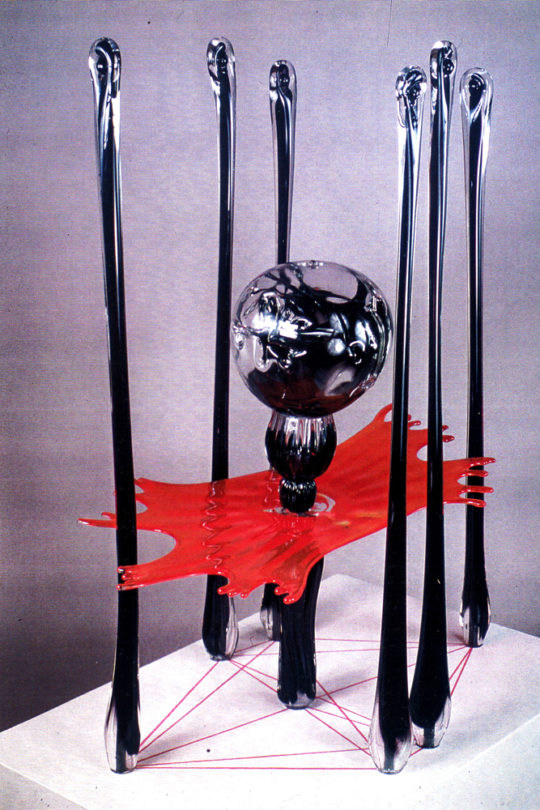 DETAILS
DETAILSAbortion III, 2002
36 x 41 inches (91.44 x 104.14 cm) -
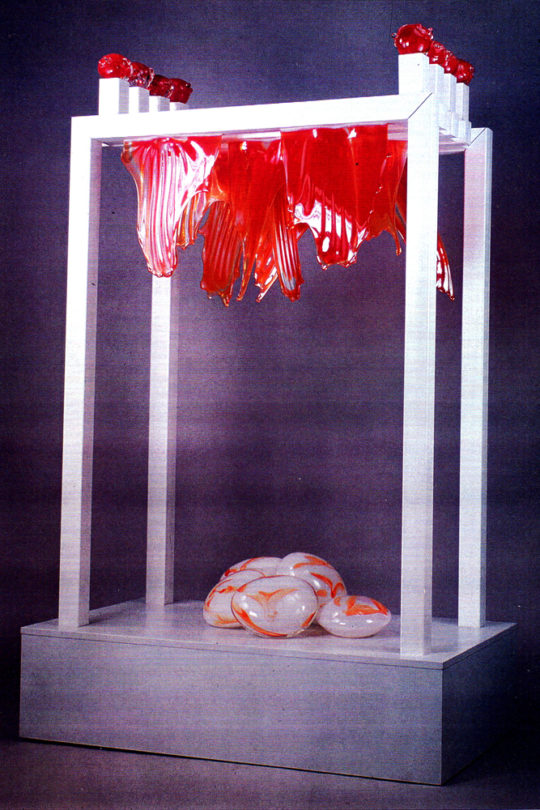 DETAILS
DETAILSAltar to Menses, 2000
48 x 77 inches (121.92 x 195.58 cm) -
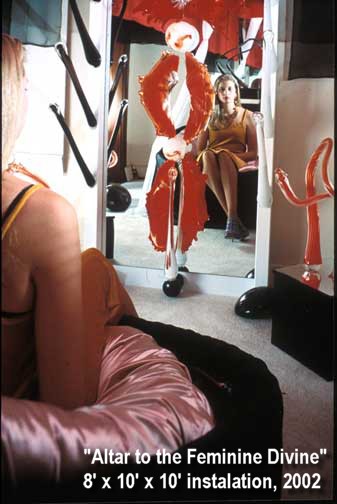 DETAILS
DETAILSAltar to the Feminine Divine: Interior with mirror, 2005
120 x 120 inches (304.8 x 304.8 cm) -
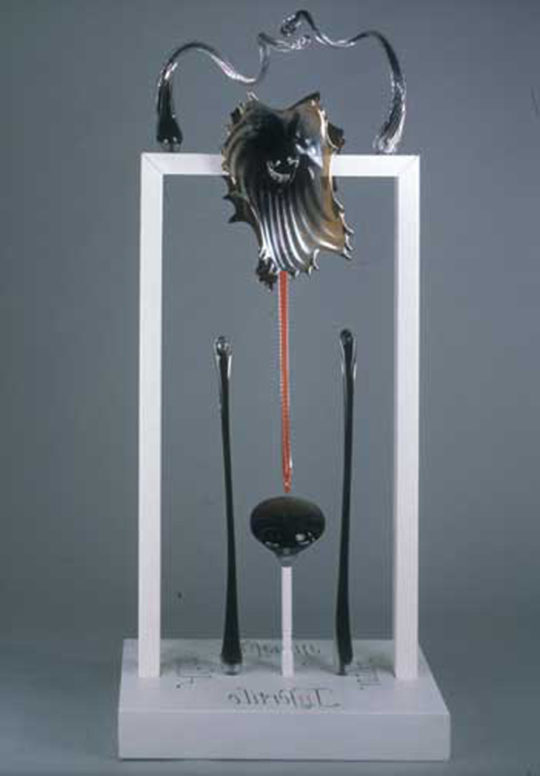 DETAILS
DETAILSAltar/Infertile, 2001
37 x 85 inches (93.98 x 215.9 cm) -
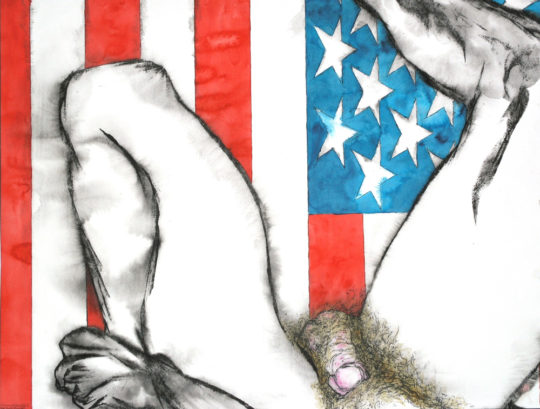 DETAILS
DETAILSAmerica the Beautiful: I, 2006
50 x 38 inches (127 x 96.52 cm) -
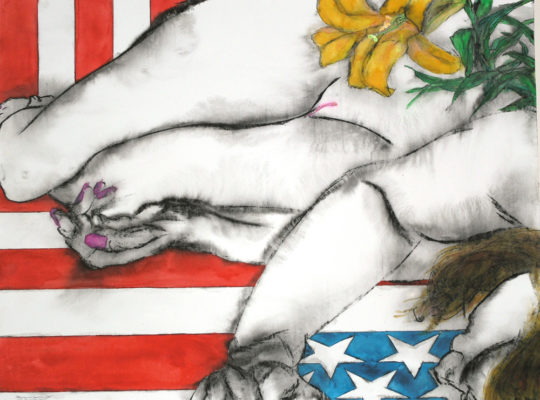 DETAILS
DETAILSAmerica the Beautiful: III, 2006
50 x 38 inches (127 x 96.52 cm) -
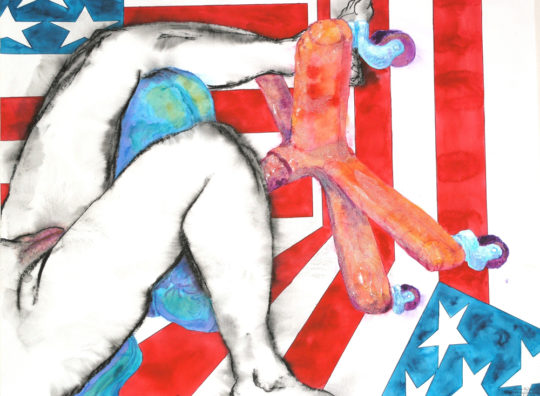 DETAILS
DETAILSAmerica the Beautiful: VII, 2006
50 x 38 inches (127 x 96.52 cm) -
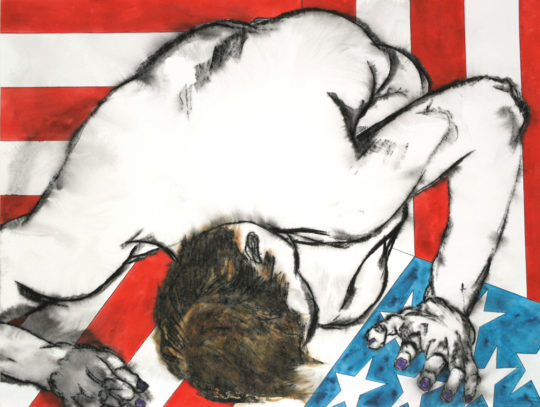 DETAILS
DETAILSAmerica the Beautiful: XI, 2006
50 x 38 inches (127 x 96.52 cm) -
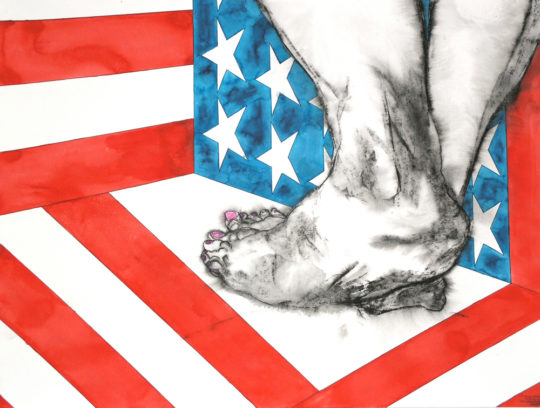 DETAILS
DETAILSAmerica the Beautiful: XII, 2006
50 x 38 inches (127 x 96.52 cm) -
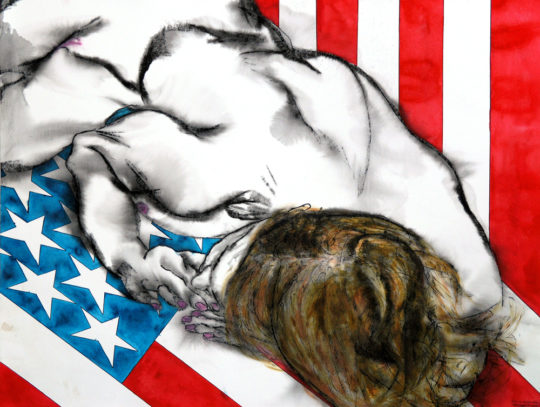 DETAILS
DETAILSAmerica the Beautiful: XIII, 2006
50 x 38 inches (127 x 96.52 cm) -
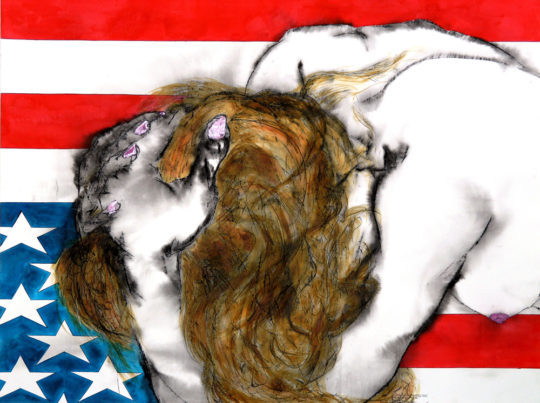 DETAILS
DETAILSAmerica the Beautiful: XVII (Dead Stars Falling III), 2006
50 x 38 inches (127 x 96.52 cm) -
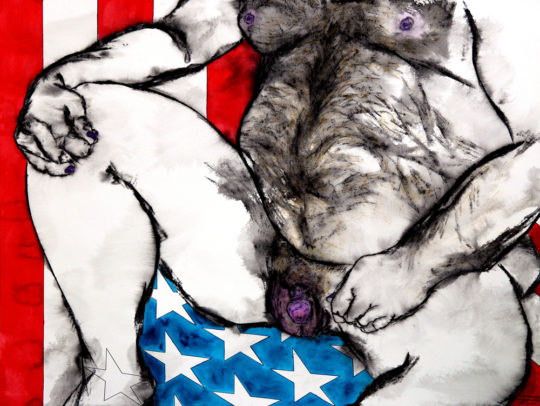 DETAILS
DETAILSAmerica the Beautiful: XX, 2006
50 x 38 inches (127 x 96.52 cm) -
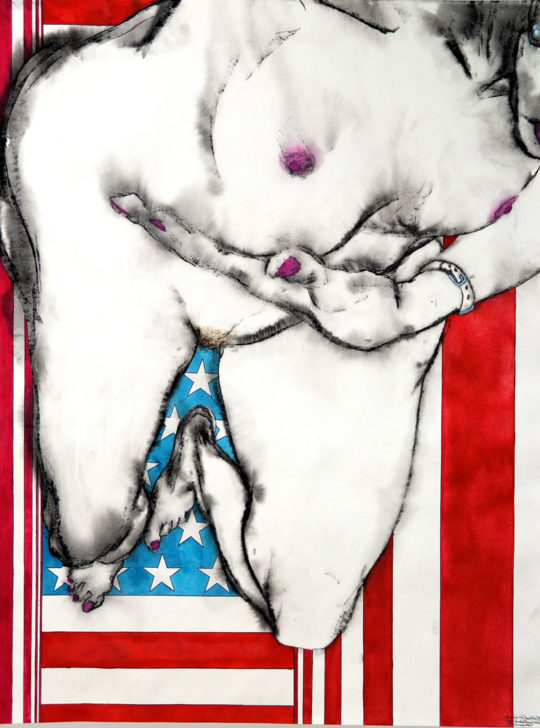 DETAILS
DETAILSAmerica the Beautiful: XXII, 2007
38 x 50 inches (96.52 x 127 cm) -
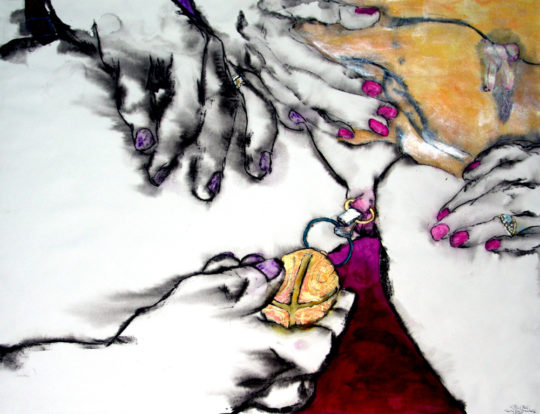 DETAILS
DETAILSBDSM: A Bell, 2006
50 x 38 inches (127 x 96.52 cm) -
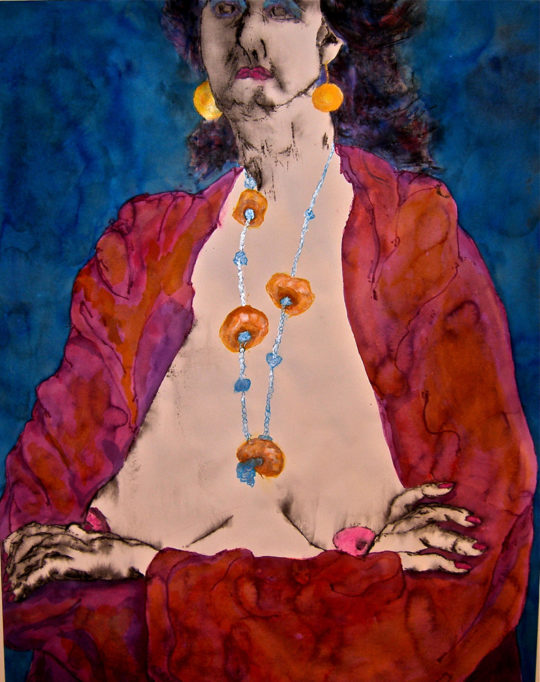 DETAILS
DETAILSBDSM: Diane, 2006
38 x 50 inches (96.52 x 127 cm) -
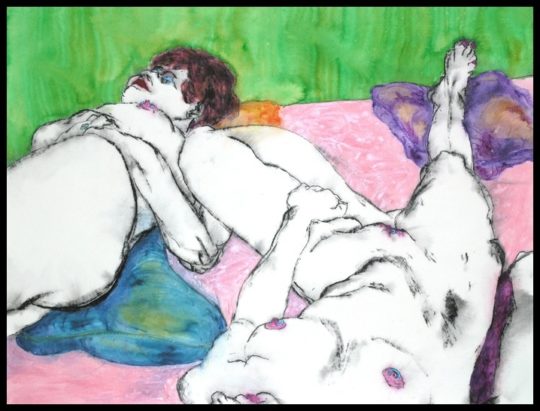 DETAILS
DETAILSBDSM: Two Figures, 2006
50 x 38 inches (127 x 96.52 cm) -
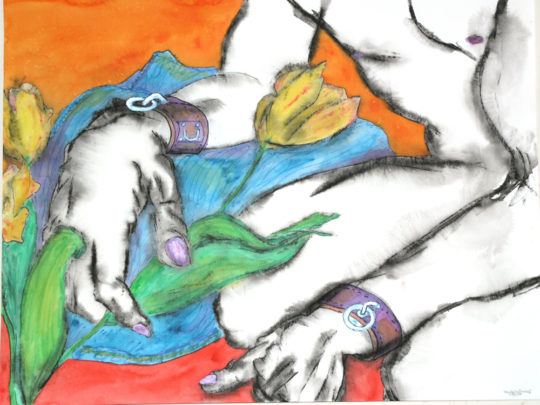 DETAILS
DETAILSBDSM: Wrist Cuffs, 2006
50 x 38 inches (127 x 96.52 cm) -
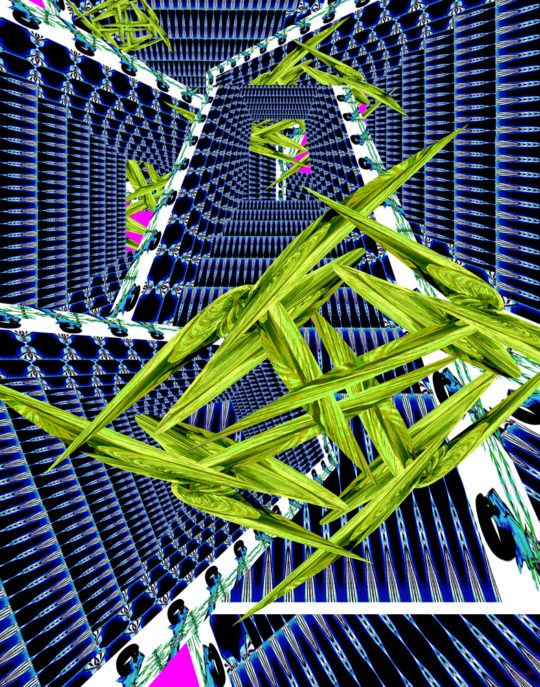 DETAILS
DETAILSBrittle Life Form “SC#4”, 2010
66 x 85 inches (167.64 x 215.9 cm) -
 DETAILS
DETAILSConception, 2010
66 x 85 inches (167.64 x 215.9 cm) -
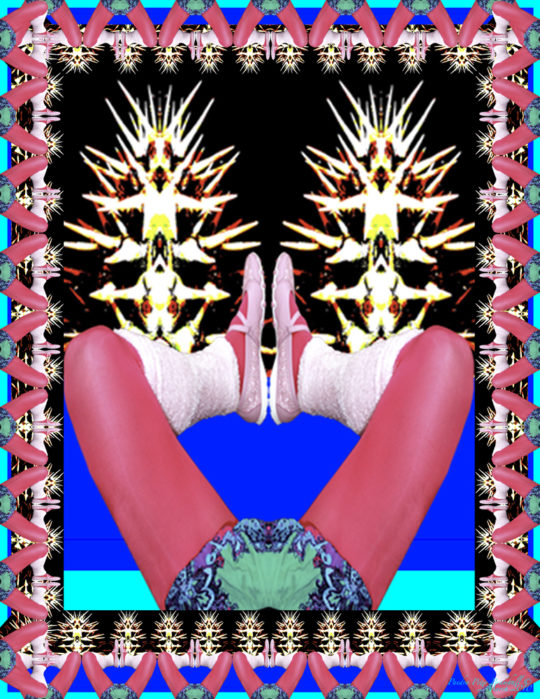 DETAILS
DETAILSDead Lolita, 2010
60 x 60 inches (152.4 x 152.4 cm) -
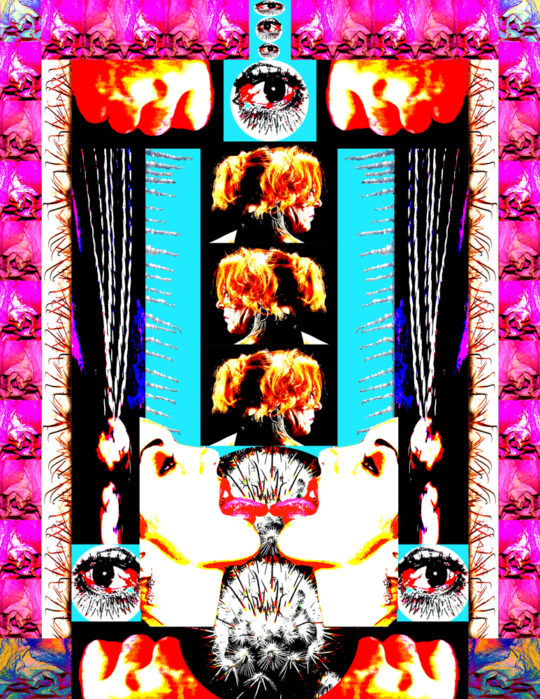 DETAILS
DETAILSDreams, Roses, Red Blonde Hair, 2009
48 x 60 inches (121.92 x 152.4 cm) -
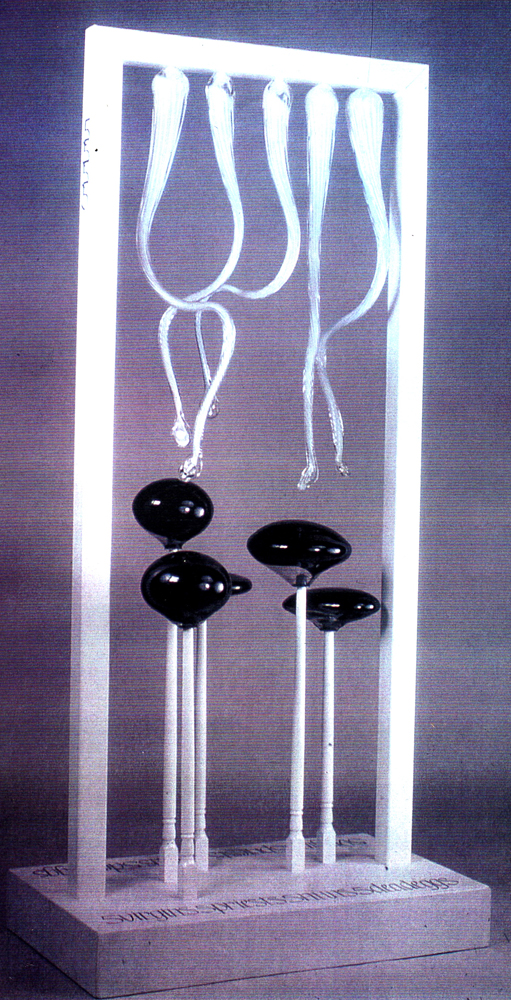 DETAILS
DETAILSFive Virgins, Five Priests, Five Nuns, Five Dead Eggs, 2002
37 x 79 inches (93.98 x 200.66 cm) -
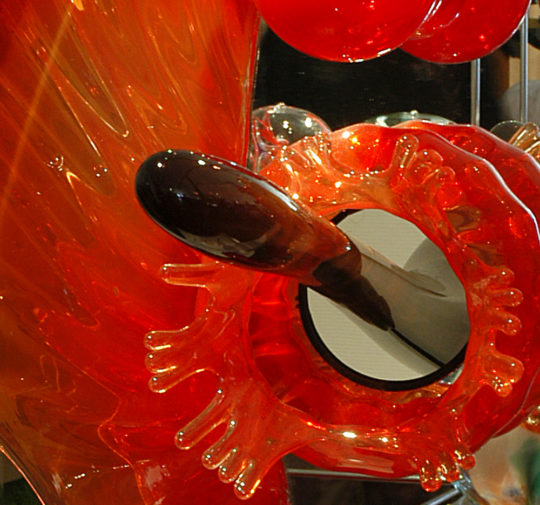 DETAILS
DETAILSFuck You Jack: detail, 2000
28 x 70 inches (71.12 x 177.8 cm) -
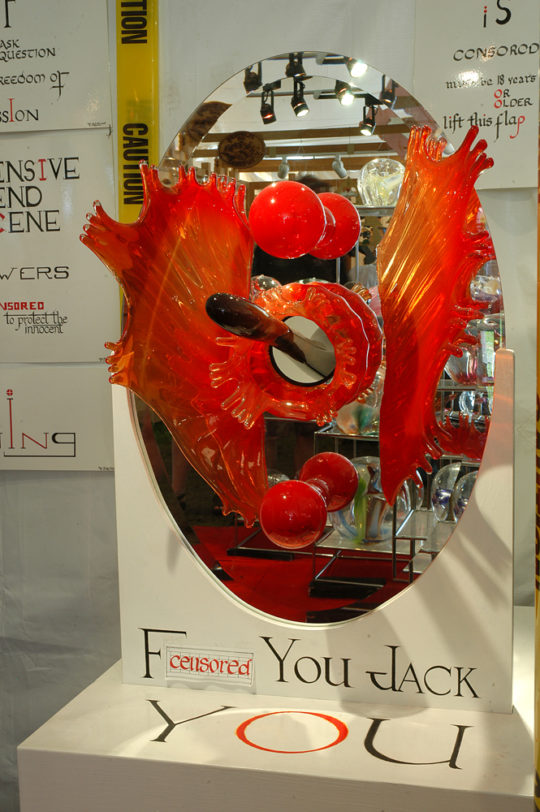 DETAILS
DETAILSFuck You Jack: frontal, 2000
28 x 70 inches (71.12 x 177.8 cm) -
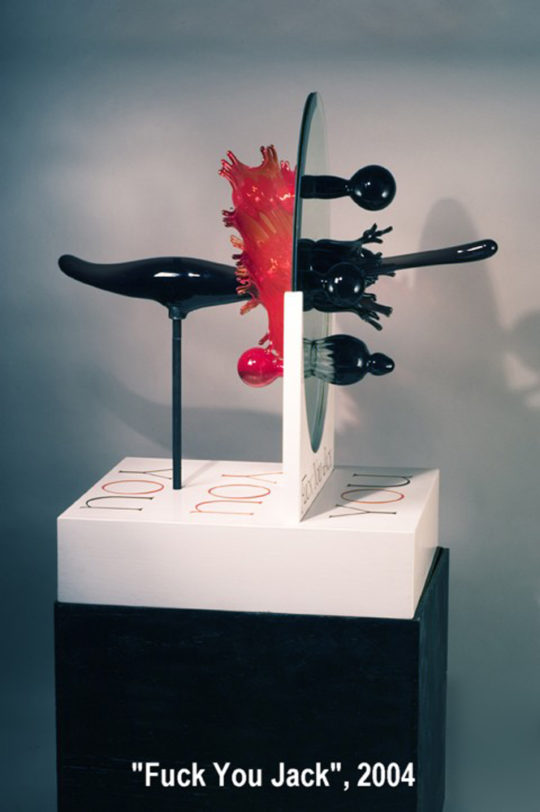 DETAILS
DETAILSFuck You Jack: side, 2000
28 x 70 inches (71.12 x 177.8 cm) -
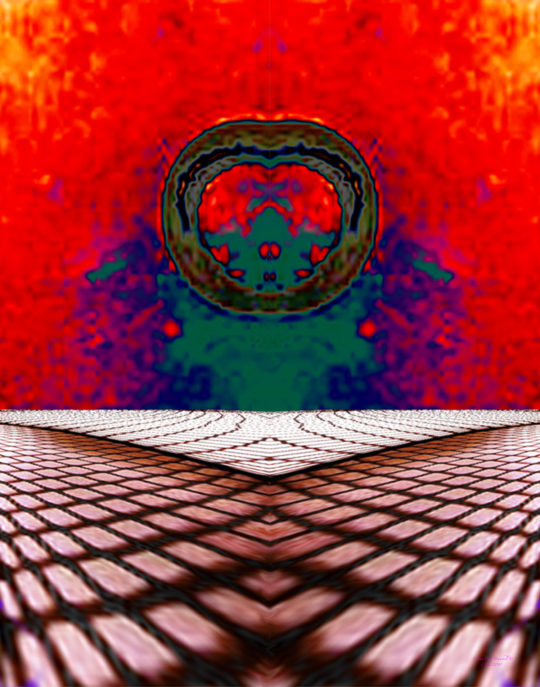 DETAILS
DETAILSHomage to Rothko, 2010
52 x 63 inches (132.08 x 160.02 cm) -
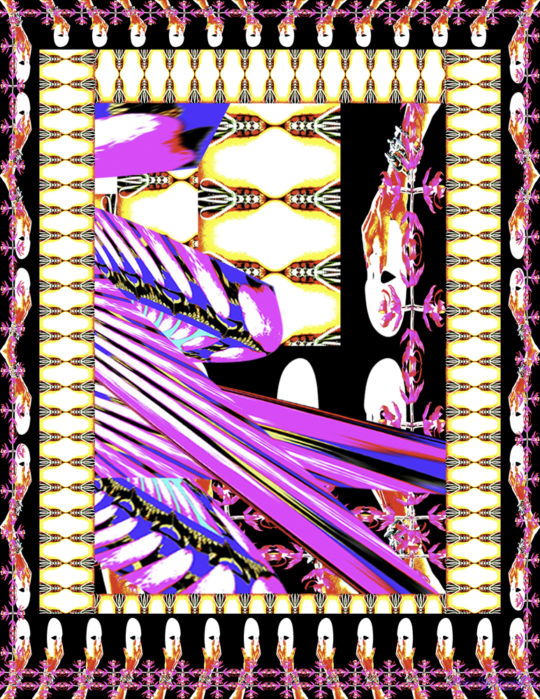 DETAILS
DETAILSInsemination Untie the Ribbons “A”, 2010
48 x 60 inches (121.92 x 152.4 cm) -
 DETAILS
DETAILSLegs, 2010
38 x 30 inches (96.52 x 76.2 cm) -
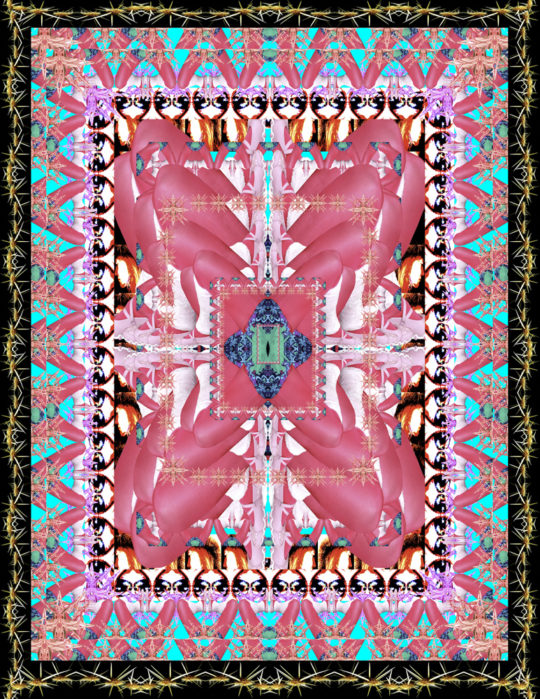 DETAILS
DETAILSLolita, 2010
48 x 60 inches (121.92 x 152.4 cm) -
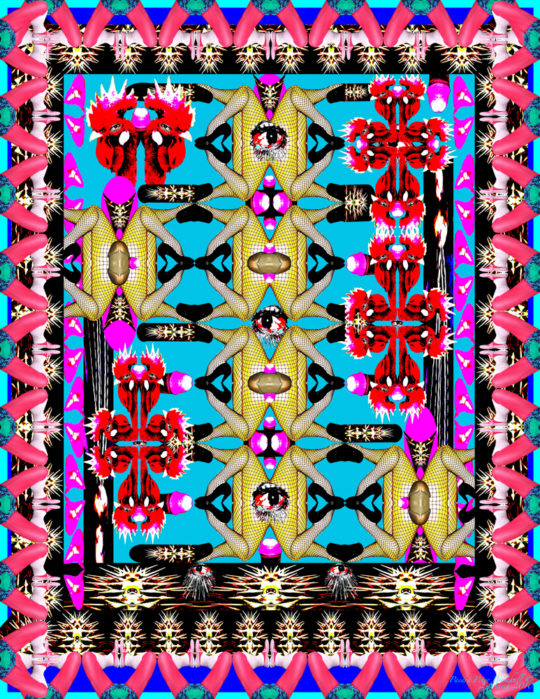 DETAILS
DETAILSLolita and the Rooster, 2010
48 x 60 inches (121.92 x 152.4 cm) -
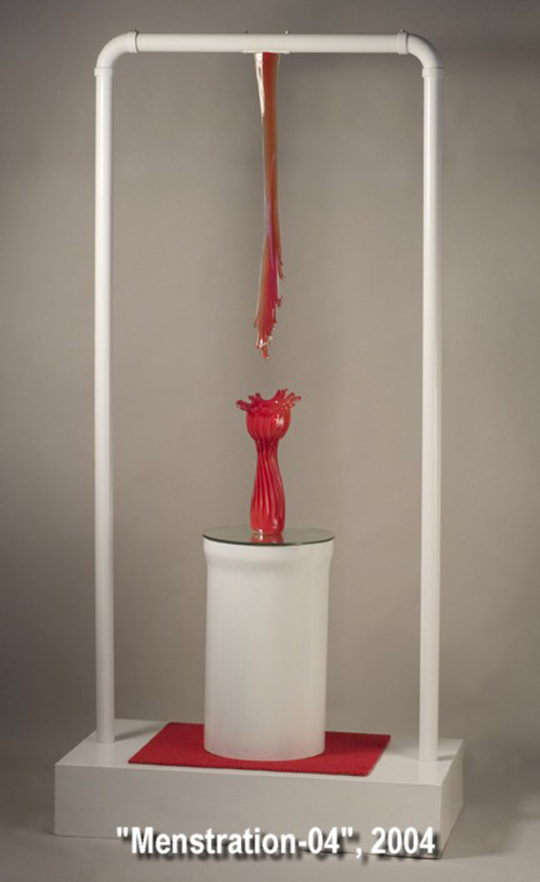 DETAILS
DETAILSMenses I, 2004
36 x 68 inches (91.44 x 172.72 cm) -
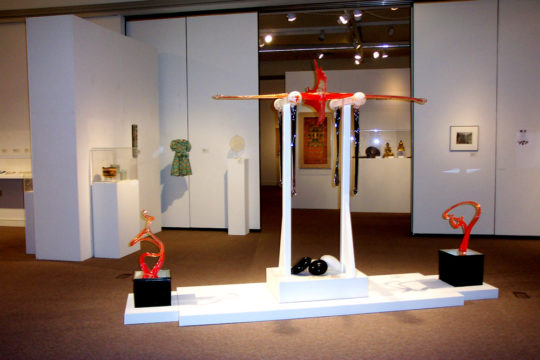 DETAILS
DETAILSMenses II: end view, 2005
130 x 84 inches (330.2 x 213.36 cm) -
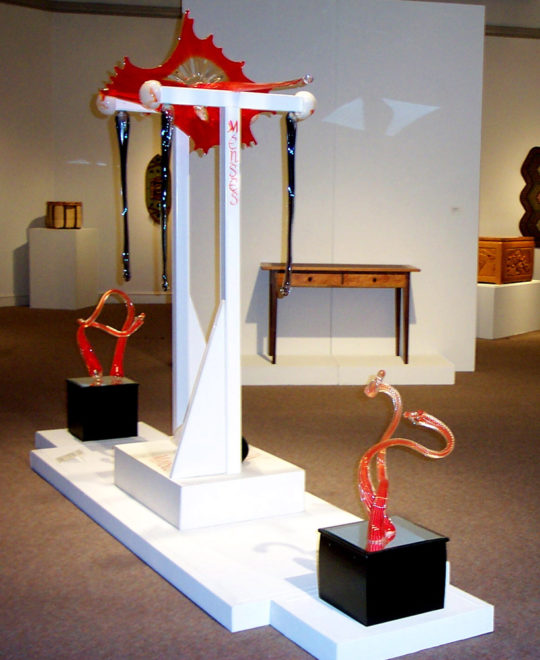 DETAILS
DETAILSMenses II: side view, 2005
130 x 84 inches (330.2 x 213.36 cm) -
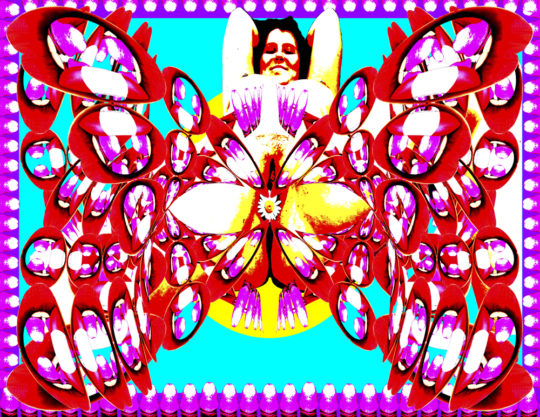 DETAILS
DETAILSMiss Wyld, 2010
106 x 66 inches (269.24 x 167.64 cm) -
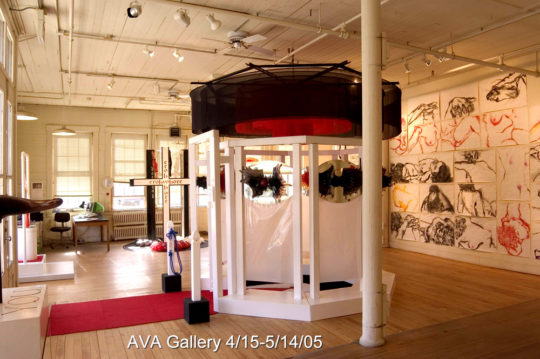 DETAILS
DETAILSMy Search for the Feminine Divine: Altar at AVA Gallery, 2005
120 x 120 inches (304.8 x 304.8 cm) -
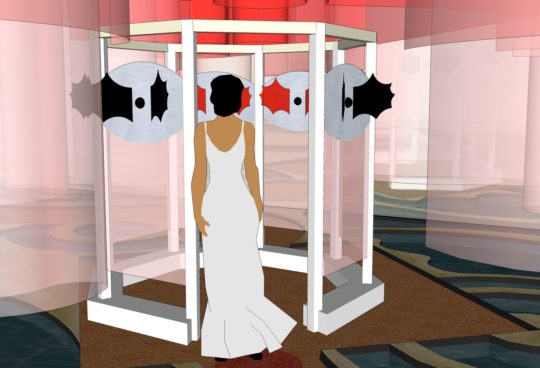 DETAILS
DETAILSMy Search for the Feminine Divine: Altar room, 2005
600 x 120 inches (1 x 304.8 cm) -
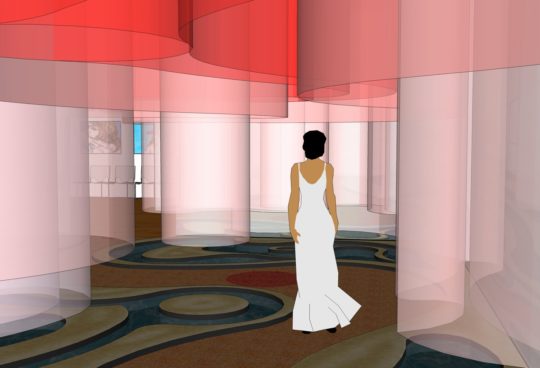 DETAILS
DETAILSMy Search for the Feminine Divine: interior of installation, 2005
600 x 120 inches (1 x 304.8 cm) -
 DETAILS
DETAILSMy Search for the Feminine Divine: overview of intsallation, 2005
600 x 120 inches (1 x 304.8 cm) -
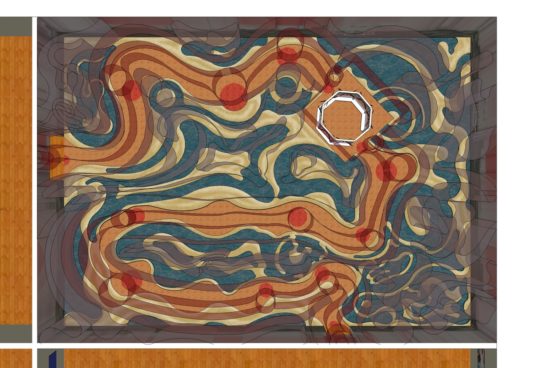 DETAILS
DETAILSMy Search for the Feminine Divine: overview of pathway, 2005
600 x 120 inches (1 x 304.8 cm) -
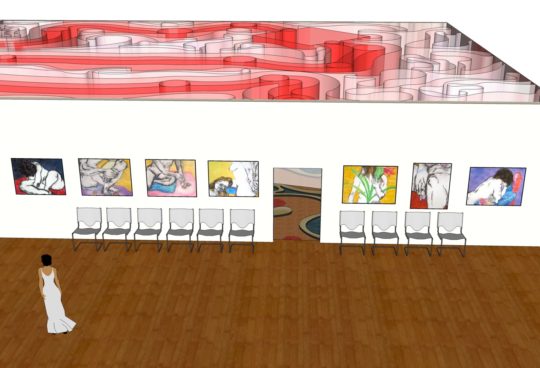 DETAILS
DETAILSMy Search for the Feminine Divine: side entrance, 2005
600 x 120 inches (1 x 304.8 cm) -
 DETAILS
DETAILSMy Search for the Feminine Divine: silk guides, 2005
600 x 120 inches (1 x 304.8 cm) -
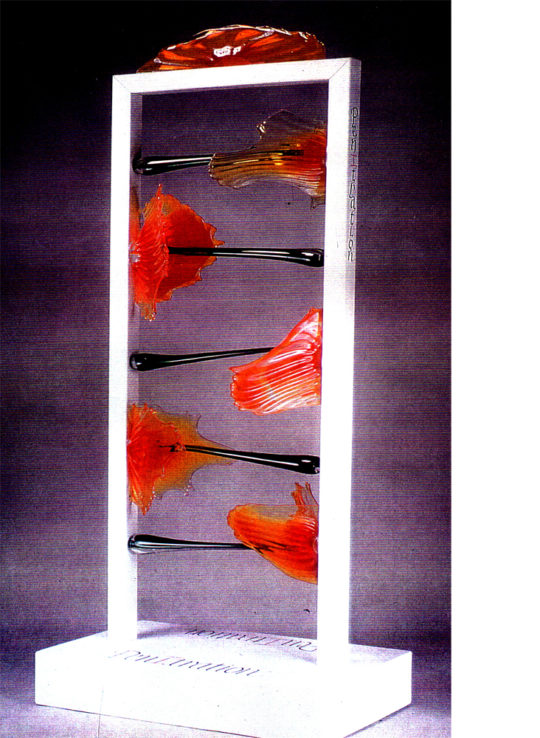 DETAILS
DETAILSPenetration, 2002
36 x 96 inches (91.44 x 243.84 cm) -
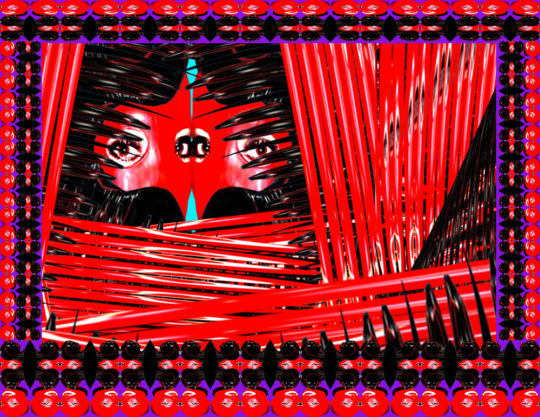 DETAILS
DETAILSRed Helmets, 2009
38 x 30 inches (96.52 x 76.2 cm) -
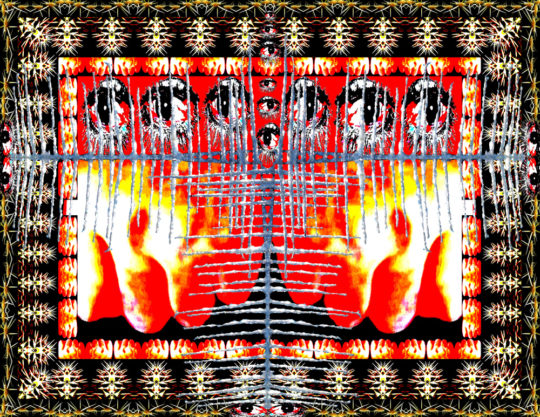 DETAILS
DETAILSSuicide, 2009
54 x 40 inches (137.16 x 101.6 cm)
-
 DETAILS
DETAILSAbortion III, 2002
36 x 41 inches (91.44 x 104.14 cm) -
 DETAILS
DETAILSAltar to Menses, 2000
48 x 77 inches (121.92 x 195.58 cm) -
 DETAILS
DETAILSAltar to the Feminine Divine: Interior with mirror, 2005
120 x 120 inches (304.8 x 304.8 cm) -
 DETAILS
DETAILSAltar/Infertile, 2001
37 x 85 inches (93.98 x 215.9 cm) -
 DETAILS
DETAILSAmerica the Beautiful: I, 2006
50 x 38 inches (127 x 96.52 cm) -
 DETAILS
DETAILSAmerica the Beautiful: III, 2006
50 x 38 inches (127 x 96.52 cm) -
 DETAILS
DETAILSAmerica the Beautiful: VII, 2006
50 x 38 inches (127 x 96.52 cm) -
 DETAILS
DETAILSAmerica the Beautiful: XI, 2006
50 x 38 inches (127 x 96.52 cm) -
 DETAILS
DETAILSAmerica the Beautiful: XII, 2006
50 x 38 inches (127 x 96.52 cm) -
 DETAILS
DETAILSAmerica the Beautiful: XIII, 2006
50 x 38 inches (127 x 96.52 cm) -
 DETAILS
DETAILSAmerica the Beautiful: XVII (Dead Stars Falling III), 2006
50 x 38 inches (127 x 96.52 cm) -
 DETAILS
DETAILSAmerica the Beautiful: XX, 2006
50 x 38 inches (127 x 96.52 cm) -
 DETAILS
DETAILSAmerica the Beautiful: XXII, 2007
38 x 50 inches (96.52 x 127 cm) -
 DETAILS
DETAILSBDSM: A Bell, 2006
50 x 38 inches (127 x 96.52 cm) -
 DETAILS
DETAILSBDSM: Diane, 2006
38 x 50 inches (96.52 x 127 cm) -
 DETAILS
DETAILSBDSM: Two Figures, 2006
50 x 38 inches (127 x 96.52 cm) -
 DETAILS
DETAILSBDSM: Wrist Cuffs, 2006
50 x 38 inches (127 x 96.52 cm) -
 DETAILS
DETAILSBrittle Life Form “SC#4”, 2010
66 x 85 inches (167.64 x 215.9 cm) -
 DETAILS
DETAILSConception, 2010
66 x 85 inches (167.64 x 215.9 cm) -
 DETAILS
DETAILSDead Lolita, 2010
60 x 60 inches (152.4 x 152.4 cm) -
 DETAILS
DETAILSDreams, Roses, Red Blonde Hair, 2009
48 x 60 inches (121.92 x 152.4 cm) -
 DETAILS
DETAILSFive Virgins, Five Priests, Five Nuns, Five Dead Eggs, 2002
37 x 79 inches (93.98 x 200.66 cm) -
 DETAILS
DETAILSFuck You Jack: detail, 2000
28 x 70 inches (71.12 x 177.8 cm) -
 DETAILS
DETAILSFuck You Jack: frontal, 2000
28 x 70 inches (71.12 x 177.8 cm) -
 DETAILS
DETAILSFuck You Jack: side, 2000
28 x 70 inches (71.12 x 177.8 cm) -
 DETAILS
DETAILSHomage to Rothko, 2010
52 x 63 inches (132.08 x 160.02 cm) -
 DETAILS
DETAILSInsemination Untie the Ribbons “A”, 2010
48 x 60 inches (121.92 x 152.4 cm) -
 DETAILS
DETAILSLegs, 2010
38 x 30 inches (96.52 x 76.2 cm) -
 DETAILS
DETAILSLolita, 2010
48 x 60 inches (121.92 x 152.4 cm) -
 DETAILS
DETAILSLolita and the Rooster, 2010
48 x 60 inches (121.92 x 152.4 cm) -
 DETAILS
DETAILSMenses I, 2004
36 x 68 inches (91.44 x 172.72 cm) -
 DETAILS
DETAILSMenses II: end view, 2005
130 x 84 inches (330.2 x 213.36 cm) -
 DETAILS
DETAILSMenses II: side view, 2005
130 x 84 inches (330.2 x 213.36 cm) -
 DETAILS
DETAILSMiss Wyld, 2010
106 x 66 inches (269.24 x 167.64 cm) -
 DETAILS
DETAILSMy Search for the Feminine Divine: Altar at AVA Gallery, 2005
120 x 120 inches (304.8 x 304.8 cm) -
 DETAILS
DETAILSMy Search for the Feminine Divine: Altar room, 2005
600 x 120 inches (1 x 304.8 cm) -
 DETAILS
DETAILSMy Search for the Feminine Divine: interior of installation, 2005
600 x 120 inches (1 x 304.8 cm) -
 DETAILS
DETAILSMy Search for the Feminine Divine: overview of intsallation, 2005
600 x 120 inches (1 x 304.8 cm) -
 DETAILS
DETAILSMy Search for the Feminine Divine: overview of pathway, 2005
600 x 120 inches (1 x 304.8 cm) -
 DETAILS
DETAILSMy Search for the Feminine Divine: side entrance, 2005
600 x 120 inches (1 x 304.8 cm) -
 DETAILS
DETAILSMy Search for the Feminine Divine: silk guides, 2005
600 x 120 inches (1 x 304.8 cm) -
 DETAILS
DETAILSPenetration, 2002
36 x 96 inches (91.44 x 243.84 cm) -
 DETAILS
DETAILSRed Helmets, 2009
38 x 30 inches (96.52 x 76.2 cm) -
 DETAILS
DETAILSSuicide, 2009
54 x 40 inches (137.16 x 101.6 cm)
No Press releases found.
No News found.
No Events Found.

